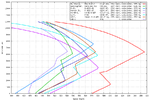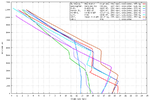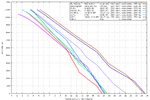- Thread starter
- #281
Airbunny,
Although the Zero's vulnerability to enemy fire was too high this wasn't what made it obsolete, the Zero was simply too slow. Maneuverability at low medium speeds was excellent, but at high speeds the controls locked up. The climb rate was also good, but top speed was low, and the maximum allowed dive speed was a great deal slower than that of US fighters.
The type 0 was not too slow, saw their enemies in '41/42.



